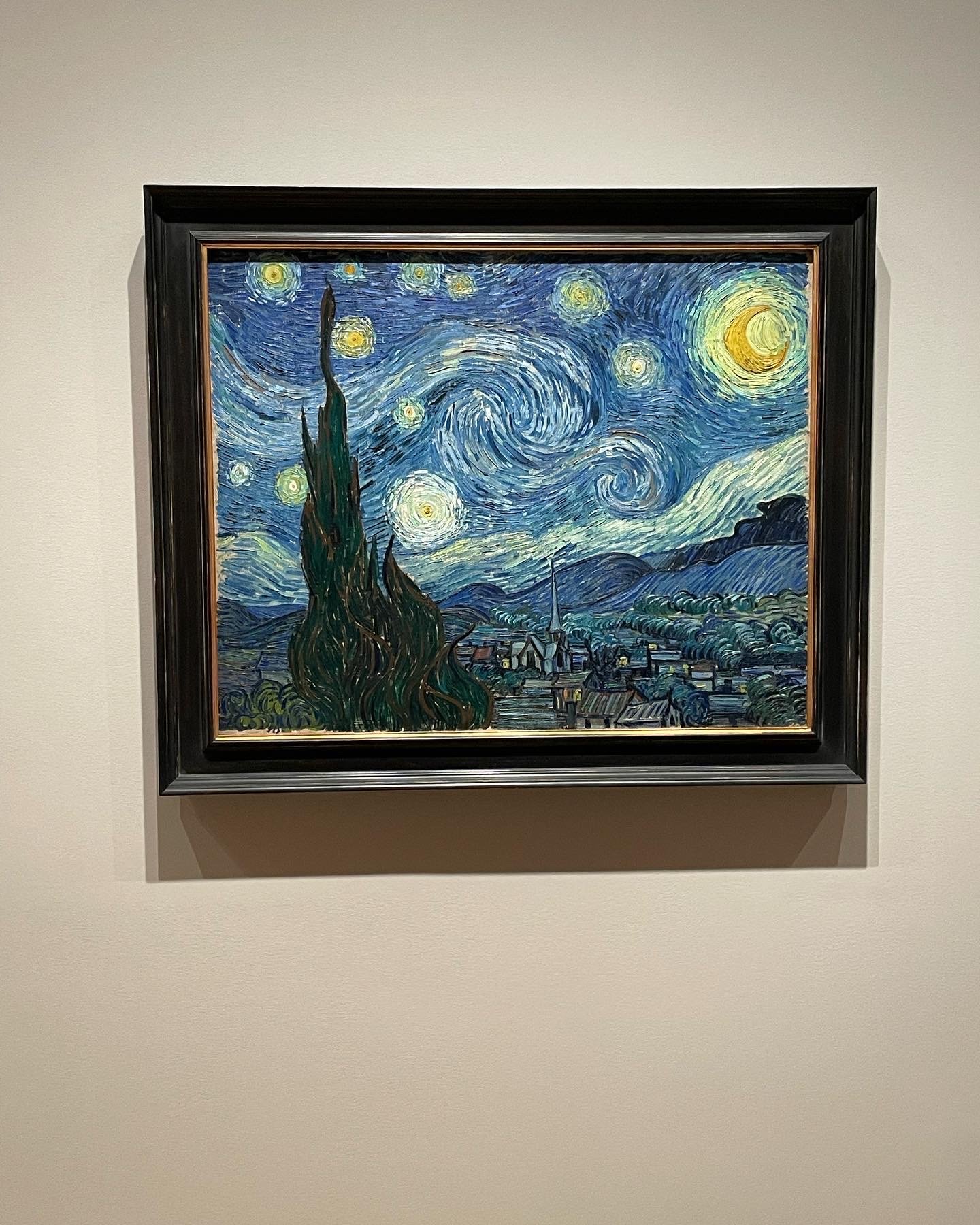A Day at the MoMA
A while back, my girlfriend Abby and I took a trip to New York City’s main branch of the Museum of Modern Art (MoMA). While Abby would be explaining the intricacies of each piece and elaborating on the histories of them, I would often reply with, “Oh, that one’s pretty!” Though I am not well-versed in art and its history, I can speak to the way different pieces made me feel and what thoughts they provoked in my mind.
One of the pieces that stayed in my mind was Van Gogh’s Starry Night. I know, not very original. However, I couldn’t help be revel over the unique brush strokes and framing of landscape that make his pieces timeless and distinct. I learned that he was the first artist to accurately represent the concept of turbulence in this piece, even before our current knowledge of this phenomenon was fully understood. His pieces ultimately left me thinking that he saw much more than what was right before him, and had an impeccable way of capturing it within the confines of a picture frame.
Another piece that stood out to me was Jackson Pollock’s One: Number 31: 1950. The piece appears improvised, chaotic, and lacking form at first glance, and I often have trouble resonating with these kinds of expressionist pieces. However, the piece somehow makes sense to me. No colors are clumped too heavily or close to one another and the color scheme is appealing to the eye. I ended up sitting on a bench in front of it and looking at it for ten minutes. What I took away from it was my perception of “beauty” without a societal narrative of what that should look like. I simply liked it because it made sense in my brain in an unconventional way.
Ever since I saw a traveling Georgia O’Keeffe exhibit at the Cleveland Art Museum, I have been fascinated by her art. I found her use of color in her piece Abstraction Blue to be reminiscent of the way colors blend together in sunsets. There is something so appealing about the way her pieces are mostly reminiscent of flowers. Though she herself had a tumultuous relationship with her work being seen as vulvic by the feminist movement of her time, I often see the comparison, and like to use her art as a medium of connecting the beauty of human form to nature - a beauty untainted by social meanings and interpretations.
It always excites me when I walk out of an art museum and reflect on what I felt while viewing the pieces. Besides the fact that I am actively interacting with history, I learn about what pleases my senses and challenge myself to see beauty outside of societal norms.









